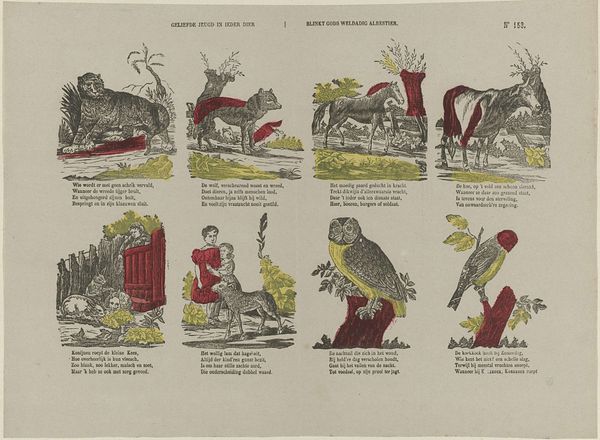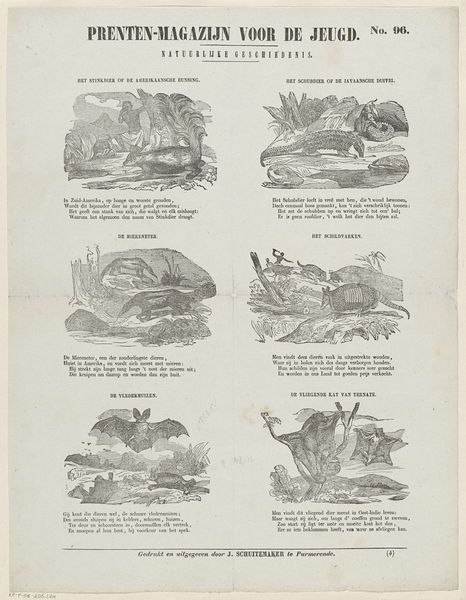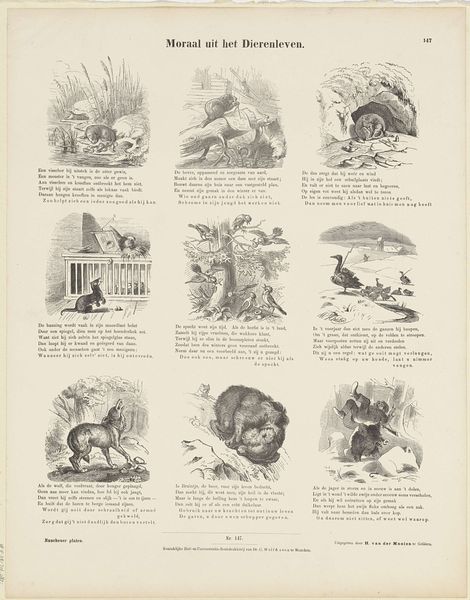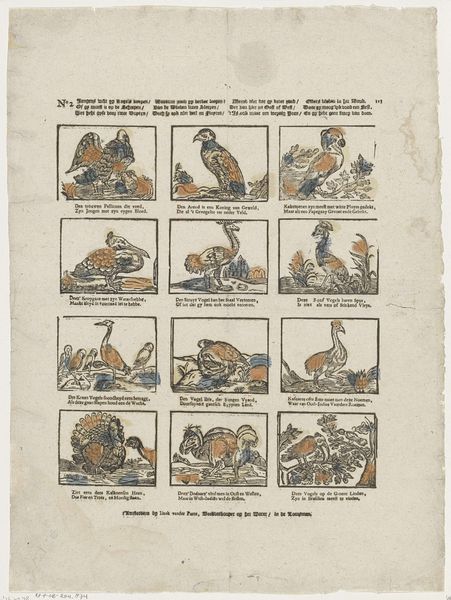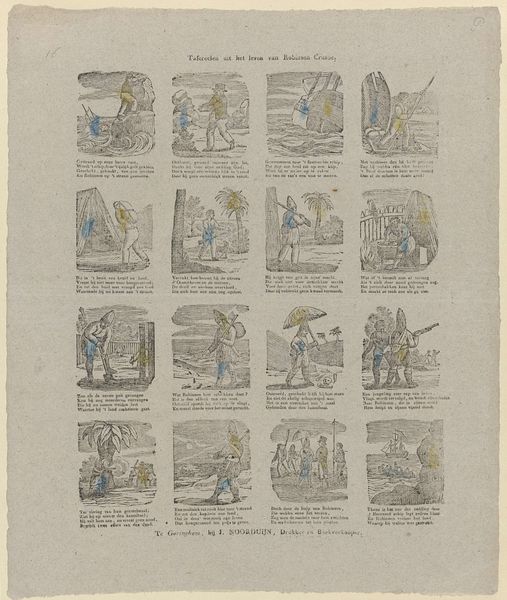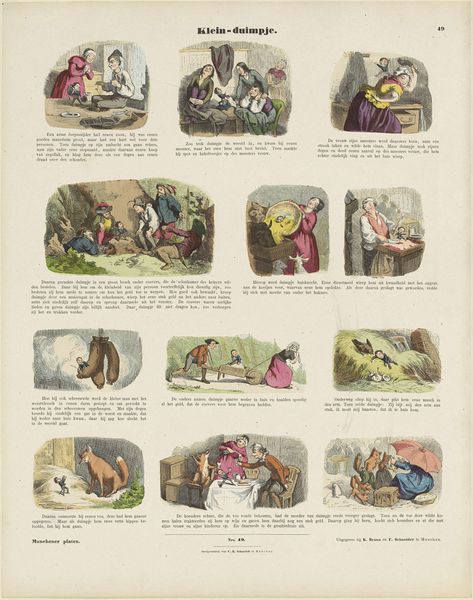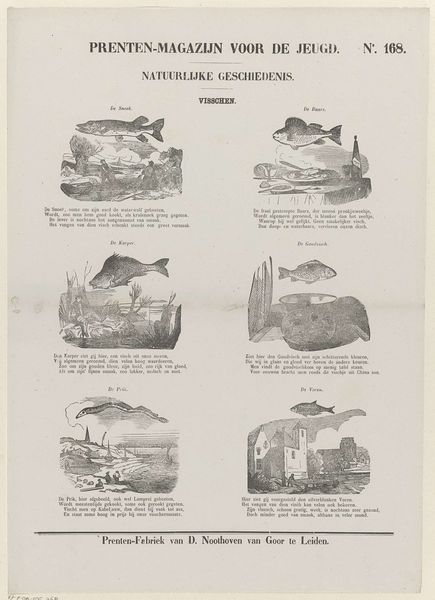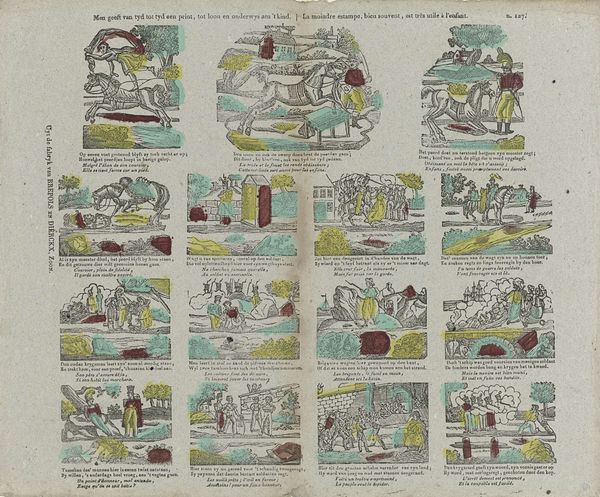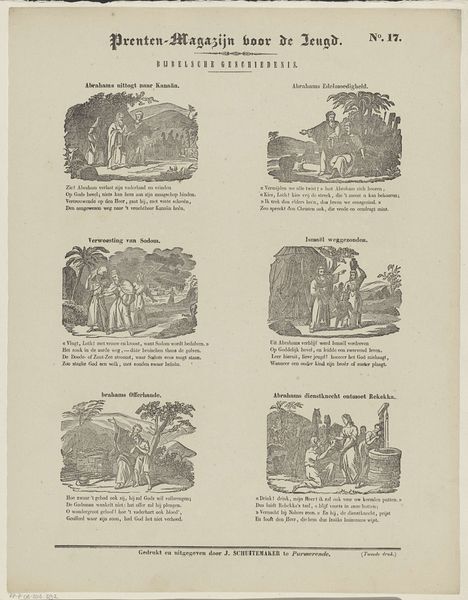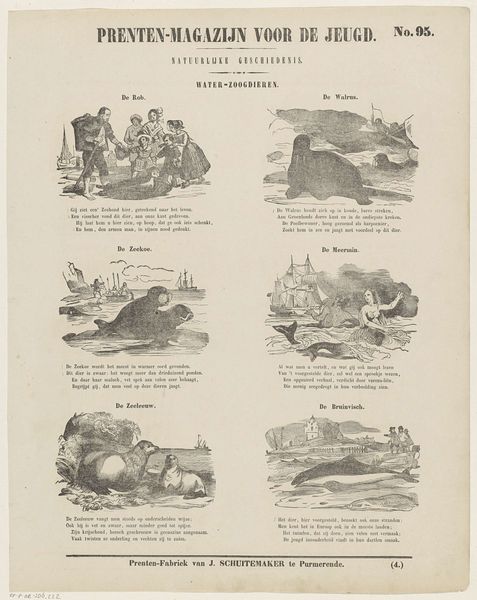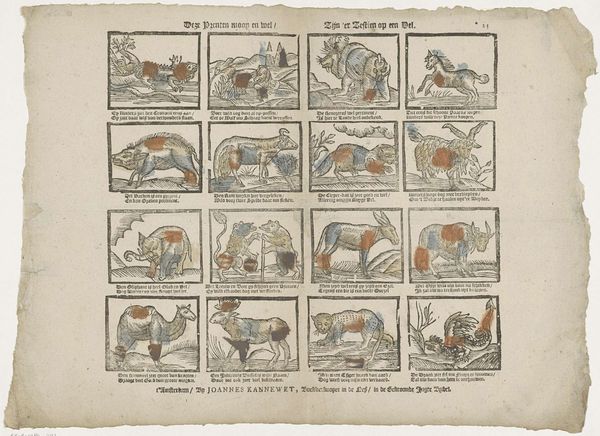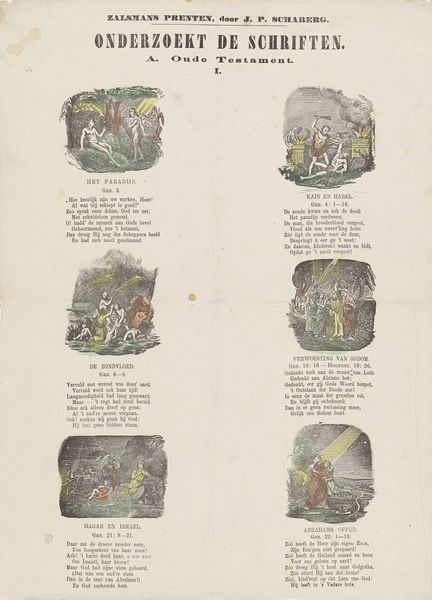
drawing, print, engraving
#
drawing
#
animal
# print
#
horse
#
watercolour illustration
#
engraving
Dimensions: height 310 mm, width 383 mm
Copyright: Rijks Museum: Open Domain
Curator: This captivating print, titled "Afbeeldingen van vogels en dieren / Planche d'oiseaux et d'animaux," dates back to somewhere between 1800 and 1833. The artist goes by the name of William Brown. It employs a blend of drawing and engraving techniques, brought to life with delicate washes of watercolor. Editor: My first thought? A wunderkammer on paper! A cabinet of curiosities flattened and inked. The composition, fractured into vignettes, gives a lovely sense of organised chaos. It reminds me of flipping through the pages of old, wonderfully odd encyclopedias. Curator: Precisely! The very structure reflects a Linnaean desire to classify and categorize. Notice the meticulous detail given to each specimen, prioritizing an almost scientific accuracy in form, if not in colour. This is a testament to the period's burgeoning interest in the natural world, viewed through a lens of empirical observation. Editor: But isn’t it charmingly imperfect? Take the lion for example. Its posture is so stiff, as if it's posing self-consciously for the artist. There's a naiveté here, a sense of wonder that transcends pure scientific document. It’s more poetry than taxonomy. And the bizarre color choices—yellow and teal highlights on a grey substrate! It’s unexpectedly stylish, in a way I can't quite explain. Curator: That “imperfection” I’d argue, lends it a crucial aesthetic tension. These colours serve not to imitate nature faithfully, but to heighten our awareness of the artifice inherent in representation. Each figure is flattened and re-presented through semiotic encoding in relation to another figure or animal, calling our attention back to the artwork’s essential “object-ness.” Editor: Ah, I see it now—that strange juxtaposition between realism and something almost fantastical. This artwork manages to be both informative and dreamlike, making one think about how knowledge, fantasy, and art-making were intimately connected centuries ago. A gorgeous artefact of scientific curiosity melded with sheer artistic invention. Curator: It's this complex interplay between objective observation and subjective expression that keeps this image visually and conceptually relevant even centuries after its creation. Editor: A playful memento from a bygone era where our understanding of our relationship with nature, the planet, was starting to take root.
Comments
No comments
Be the first to comment and join the conversation on the ultimate creative platform.
